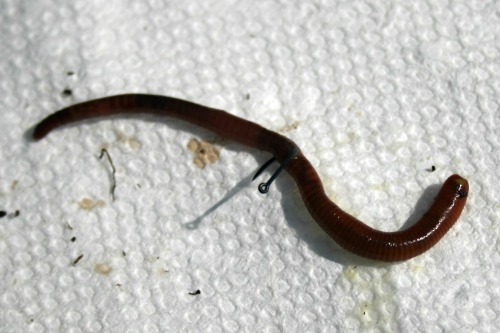Transform Your Lawn with the Expertise of Red Wiggler Express Lawn Care Specialists
Transform Your Lawn with the Expertise of Red Wiggler Express Lawn Care Specialists
Blog Article
Red Wigglers 101: Every Little Thing You Need to Know for Thriving Gardens
Red wigglers, or Eisenia fetida, play a vital duty in sustainable gardening practices, serving as effective decomposers that transform natural waste into beneficial vermicompost. Understanding their environment, dietary choices, and the myriad benefits they supply can change your gardening method.
Recognizing Red Wigglers

Red wigglers grow in environments rich in natural material and wetness. Red Wiggler Express. They possess an one-of-a-kind gastrointestinal system that permits them to process food scraps rapidly, secreting castings that are loaded with necessary nutrients such as nitrogen, phosphorus, and potassium. These spreadings boost soil framework, enhance water retention, and foster advantageous microbial activity, every one of which contribute to robust plant wellness
In addition, red wigglers can make it through in diverse problems, making them adaptable to numerous gardening techniques, consisting of interior and outside composting systems. Their ability to take in huge quantities of natural waste everyday placements them as beneficial allies for both home garden enthusiasts and industrial growers. By incorporating red wigglers right into horticulture initiatives, one can considerably improve dirt fertility and support lasting gardening practices.
Ideal Environment for Red Wigglers
Creating an ideal atmosphere for red wigglers is vital for optimizing their composting capabilities and total wellness. Red wigglers flourish in moist, dark, and well-aerated environments, which closely resemble their native environments in leaf trash and rotting organic matter. An appropriate habitat ought to supply a temperature level array in between 55 ° F and 77 ° F(13 ° C to 25 ° C), as severe temperature levels can emphasize or harm the worms.
The bed linen product, such as shredded paper, cardboard, or coconut coir, ought to be kept moist yet not extremely damp, as too much wetness can cause anaerobic problems damaging to worm health. Furthermore, a pH degree in between 6.0 and 7.5 is ideal, making certain a well balanced setting.
Correct oygenation is similarly important; it permits for oxygen flow and protects against the buildup of unsafe gases. A container or container designed for vermicomposting should have drainage holes to remove excess wetness and advertise air flow. Regular surveillance of these problems is necessary for preserving a thriving red wiggler population, eventually boosting their performance in damaging down natural waste and enriching yard soil.
Dietary Needs and Preferences

Red wigglers exhibit certain preferences; they are especially keen on softer, disintegrating products over more difficult or even more fibrous substances. It is essential to avoid feeding them citrus peels, onion, and garlic in huge amounts, as these can be hazardous. In addition, meat, dairy products, and oily foods need to be excluded, as they can draw in pests and produce undesirable odors.
(Hickory NC Worms For Sale)To maintain optimum health, a well balanced mix of green and brownish materials is advised. Environment-friendly products, such as veggie scraps, provide nitrogen, while brown products, like cardboard and dried fallen leaves, supply carbon. Checking the dampness material and making certain a regular food supply will even more boost their development and composting capabilities. By satisfying their dietary requirements, gardeners can cultivate a thriving population of red wigglers in their compost systems.
Benefits of Making Use Of Red Wigglers
The remarkable advantages of making use of red wigglers in horticulture prolong much past their function in composting. These flexible microorganisms add significantly to soil health, improving nutrition accessibility and promoting microbial activity. By aerating the soil as they delve, red wigglers boost drainage and root penetration, creating an optimum environment for plant growth.
Furthermore, red wigglers are efficient recyclers of natural waste, transforming it into nutrient-rich spreadings that act as an outstanding all-natural plant food. These castings have useful microbes and necessary nutrients, such as nitrogen, phosphorus, and potassium, which are crucial for plant advancement. The slow launch of nutrients from worm spreadings guarantees a constant supply, decreasing the danger of nutrient leaching and promoting sustainable horticulture techniques.
Making use of red wigglers cultivates an extra sustainable gardening method by reducing reliance on chemical plant foods and promoting a closed-loop system, where waste is transformed right into valuable sources. Generally, integrating red wigglers right into horticulture methods offers a wide variety of environmental and agricultural advantages.
(Lake Rhodhiss Bait)
Composting With Red Wigglers

To launch an effective vermicomposting system, pick an ideal container with correct ventilation and drain. The ideal atmosphere for red wigglers consists of a damp, dark setting with temperatures in between 55 ° F and 77 ° F. Begin by layering shredded paper, cardboard, and food scraps, making certain a balanced mix of carbon and nitrogen-rich materials.
Red wigglers prosper on veggie peels, fruit scraps, coffee grounds, and eggshells, while avoiding meat, dairy, and oily foods that can bring in insects. Consistently check moisture degrees; the bedding needs to perspire yet not soggy. Harvest worm spreadings every few months by separating the worms from the compost, which can then be utilized directly in gardens or saved for later use.
Implementing vermicomposting not just reduces landfill waste but additionally enhances yard dirt, promoting healthy and balanced plant development and lasting horticulture practices. Welcome this green method to improve your horticulture undertakings.
Verdict
In summary, red wigglers are crucial organisms for enhancing yard efficiency via effective composting. Their details environment needs, nutritional preferences, and substantial benefits add to sustainable horticulture practices. By using red wigglers, gardeners can dramatically boost soil top quality and nutrient availability, fostering healthier plant development. Welcoming the technique of vermicomposting not just sustains waste decrease but additionally promotes an ecological balance within garden environments, eventually bring about flourishing and resistant yards.
Report this page